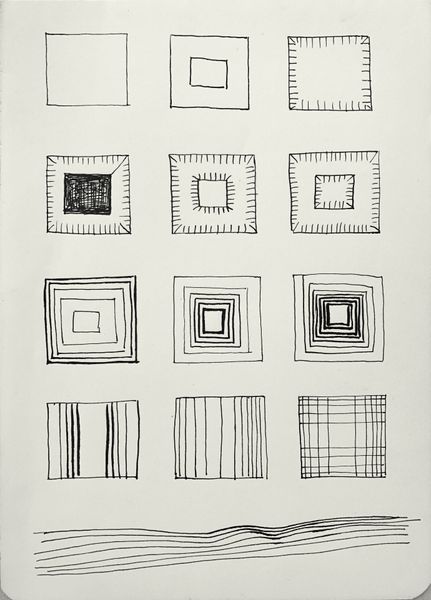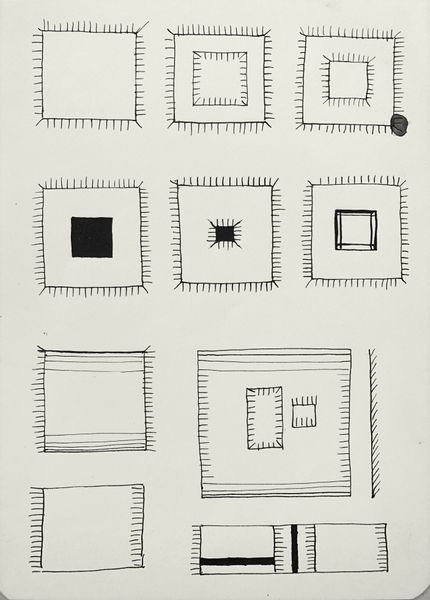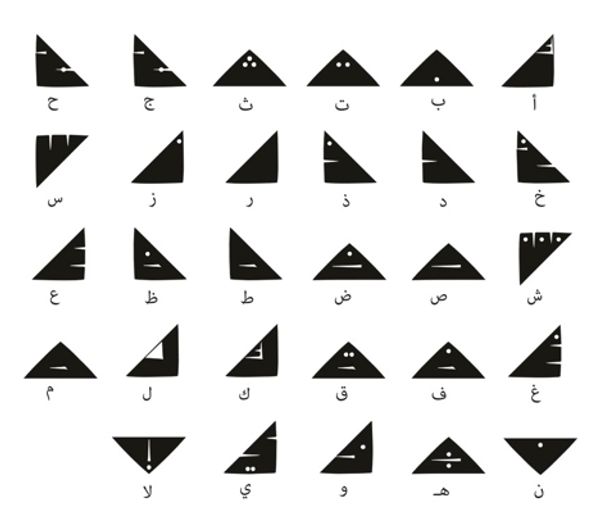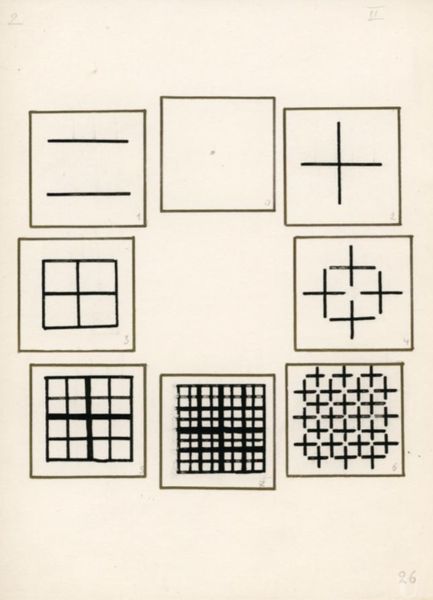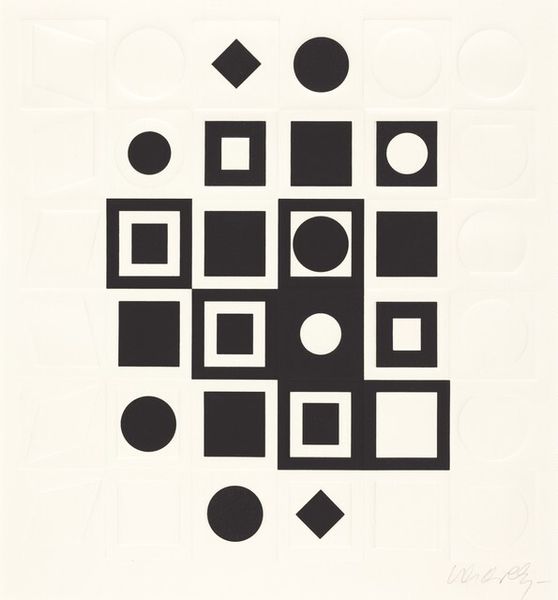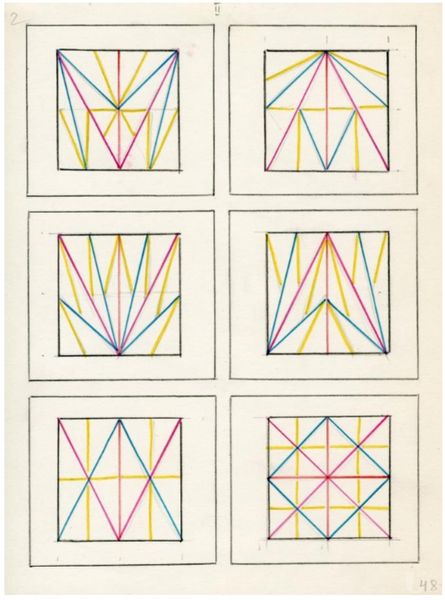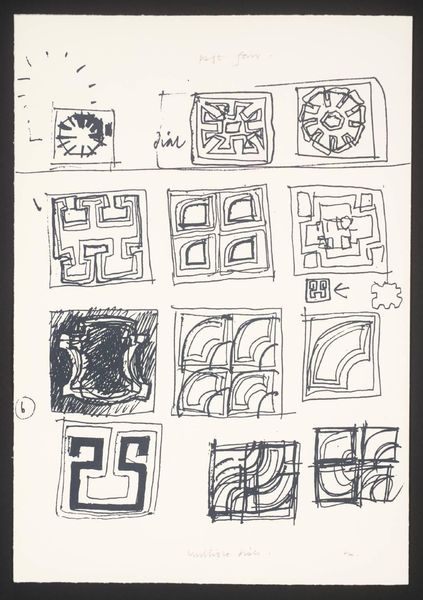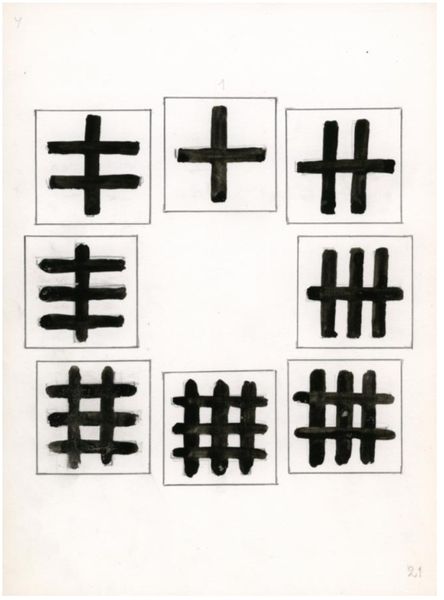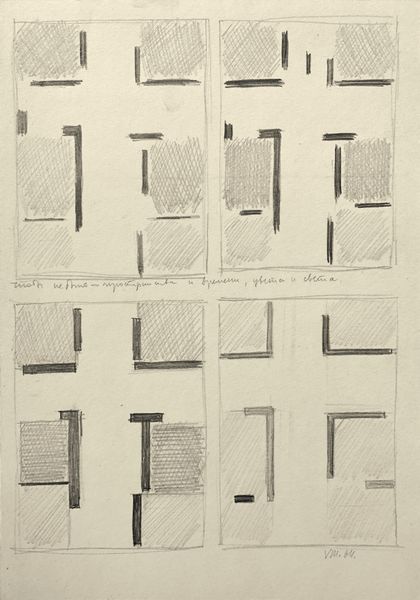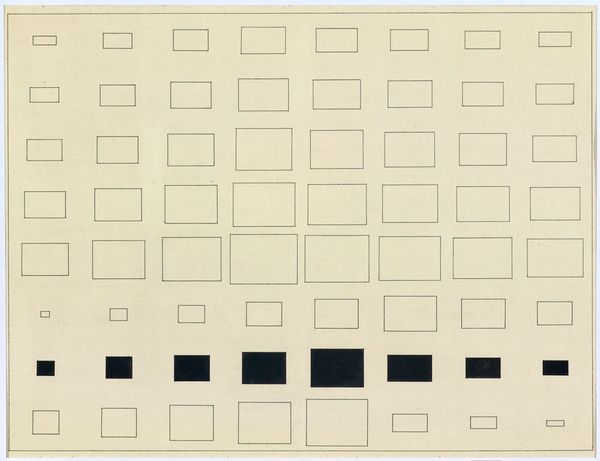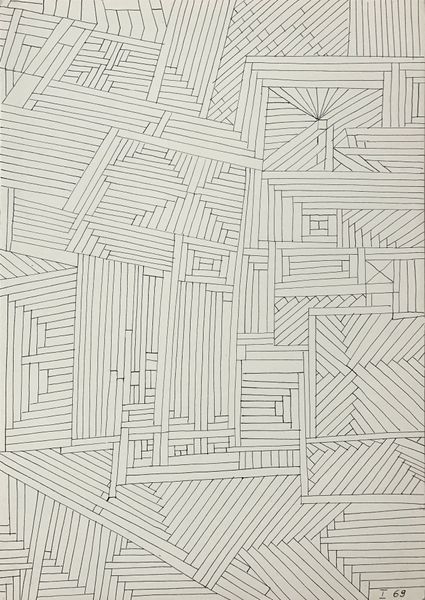
drawing
#
drawing
#
geometric
#
modernism
Dimensions: sheet: 19.9 × 29.5 cm (7 13/16 × 11 5/8 in.)
Copyright: National Gallery of Art: CC0 1.0
Curator: Richard Artschwager's "Basket, Table, Door, Window, Mirror, Rug #29," a drawing from 1974. Editor: Immediately striking! There's something unsettling about the simple, almost childlike renderings, all those slightly distorted boxes, as if reality is just a collection of wonky containers. Curator: It is unsettling, isn't it? Artschwager consistently challenged our perceptions of the everyday. The cultural associations we assign to "basket," "table," or "door" get deconstructed here, stripped bare. Editor: He offers a symbolic alphabet of domestic space, perhaps? What do you think is gained by itemizing our physical surroundings this way? I'm interested in how these objects relate to gendered space and labor, but do you see them critiquing those ideas directly or reinforcing a pre-existing power structure? Curator: It is hard to not feel its impact in light of contemporaneous feminist and social movements. By simplifying these objects to nearly abstract forms, he asks us to re-examine our relationships with them and the power structures they subtly support. Editor: The neutrality feels like a veil. The objects are indeed devoid of function, practically reduced to graphic symbols and arranged democratically without discernible hierarchy. A rug gets the same status as a door; a mirror, a basket. It speaks to the commodification of these domestic interiors and potentially to a deeper crisis of value and identity. Curator: Exactly! It is important that this work has roots in modernism with Artschwager working against minimalism's austerity but his work also responds to broader historical and institutional factors – particularly the art market's tendency to assign hierarchical value. Editor: What is interesting for me is his radical flattening, there’s such limited modeling that it all becomes a kind of index or icon to the represented items. Well, seeing them this way has definitely adjusted my perceptions about Artschwager's social commentary and approach to modernism in art. Curator: It’s shown that we’ve both gained a deeper awareness of how art history can enlighten discussions about broader socio-historical elements.
Comments
No comments
Be the first to comment and join the conversation on the ultimate creative platform.
